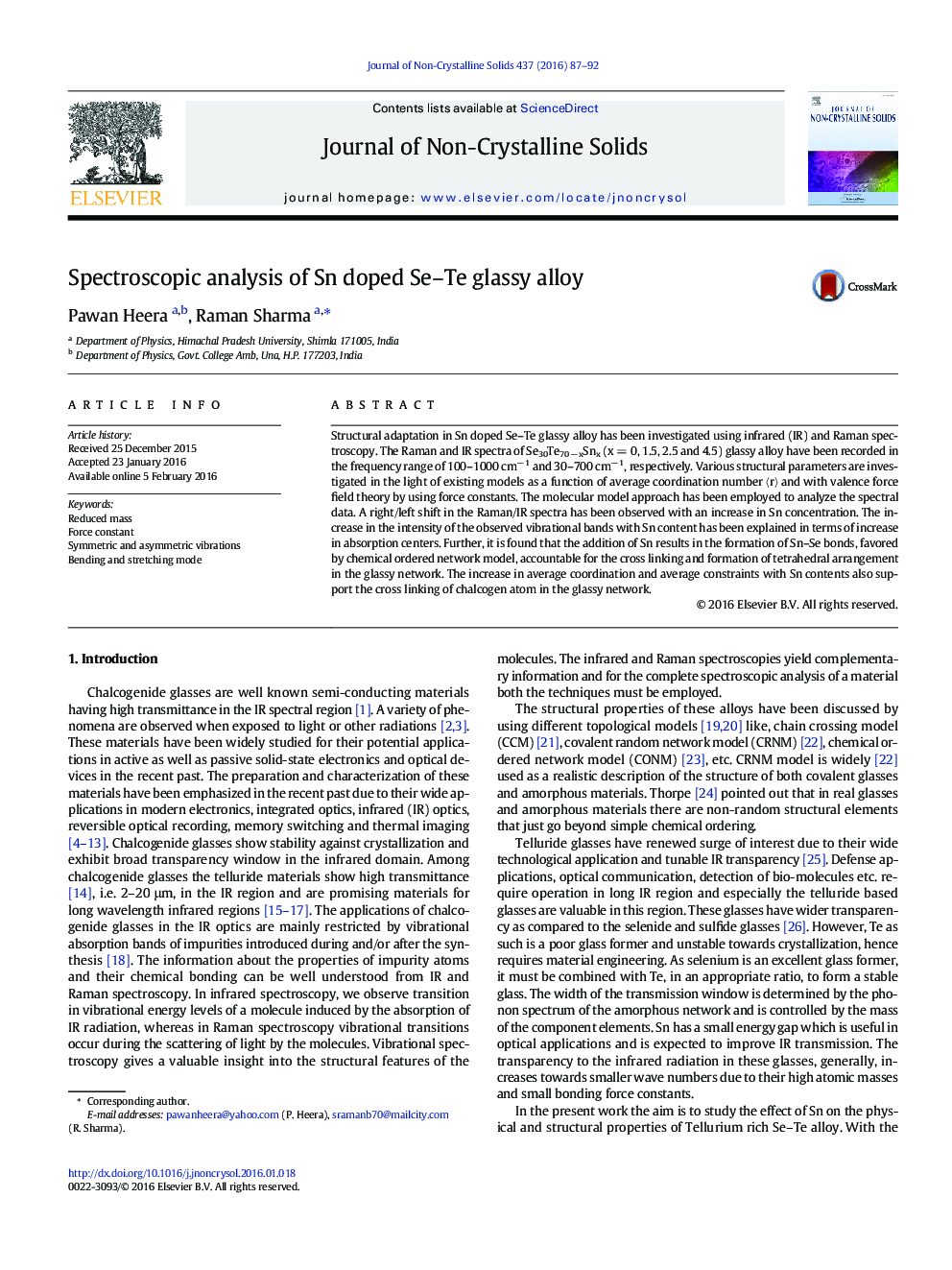| Article ID | Journal | Published Year | Pages | File Type |
|---|---|---|---|---|
| 1480356 | Journal of Non-Crystalline Solids | 2016 | 6 Pages |
•IR and Raman Spectroscopic analysis of tellurium rich Se30Te70-xSnx glassy alloy has been carried out.•A right/left shift in the Raman/IR spectra has been observed with an increase in Sn concentration.•Most of IR and Raman active bands recur with low intensity and shift in position towards lower wave number.•New bending mode of Te-O & Te-O-Te or O-Te-O and stretching mode of Sn-O and SnO2 are observed in the Raman Spectra.
Structural adaptation in Sn doped Se–Te glassy alloy has been investigated using infrared (IR) and Raman spectroscopy. The Raman and IR spectra of Se30Te70 − xSnx (x = 0, 1.5, 2.5 and 4.5) glassy alloy have been recorded in the frequency range of 100–1000 cm− 1 and 30–700 cm− 1, respectively. Various structural parameters are investigated in the light of existing models as a function of average coordination number ⟨r⟩ and with valence force field theory by using force constants. The molecular model approach has been employed to analyze the spectral data. A right/left shift in the Raman/IR spectra has been observed with an increase in Sn concentration. The increase in the intensity of the observed vibrational bands with Sn content has been explained in terms of increase in absorption centers. Further, it is found that the addition of Sn results in the formation of Sn–Se bonds, favored by chemical ordered network model, accountable for the cross linking and formation of tetrahedral arrangement in the glassy network. The increase in average coordination and average constraints with Sn contents also support the cross linking of chalcogen atom in the glassy network.
